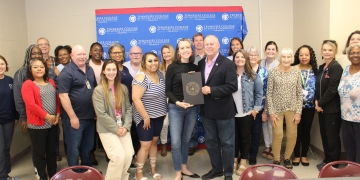Last month, we examined the effects of drugs on the brain and body to better understand the behaviors of those struggling with substance use addictions. This week we look specifically at alcohol: what it does to us, what it does for us, and why we keep it around.
Alcohol is perhaps the oldest substance the world has used to “feel good”. It is a unique drug in that you can make alcohol by fermenting a combination of water, sugar, and yeast. Judith Grisel in her book Never Enough calls alcohol the “Sledgehammer” because, unlike cocaine and opiates that we know work on specific parts of the brain and body, alcohol produces strong responses in the brain and nervous system in many different ways.
A general opinion towards alcohol might be: “alcohol is legal, sure some people overdo it, but they get into trouble and drinking in moderation is perfectly fine.” This is a reasonable perspective and one most of our culture adopts, but the more we know about how alcohol effects the body, the more warning we get from health professionals about daily excessive use of alcohol and even drinking in moderation. One study found that having as little as one drink per day may increase your risk of getting cancer or developing heart conditions, and two drinks per day may even decrease your life expectancy by one to two years (A.M. Wood et al.,1513-1523).
So why do we drink?
We drink because we are anxious. We want to be liked, we want to have fun, we want to make a good impression and alcohol does a good job at taking the edge off these performances. Social drinking is a past time for Americans, but there is usually more drinking than socializing. When we get together with family and friends for a wedding, graduation, or football game, we think alcohol will help us forget our flaws, soothe our anxieties about being accepted again, and ultimately make it easier for us to connect with one another. Wanting to feel connected is good and natural, but why do we as a culture believe that alcohol is the ultimate aid in feeling connected to others? And what do we do about it?
The first question is for you to answer personally. Judith Grisel answers the second question,
“As a start, we might work to ensure more spaces where not drinking isn’t just tolerated but acceptable. In addition to offering more beverage options, we could convey this acceptance by really seeing and hearing each other, putting the quote ‘social’ back into the drinking. Practicing this, we might notice that at least some of those we meet will be better sated by friendship than by booze” (Grisel, 102).
For those experiencing drug and alcohol issues and want help, give us a call at the Rapha Center.
Outpatient Addiction and Recovery Community Mental Health 482 Interstate Drive, Suite D 482 Interstate Drive, Suite C Manchester, TN 37355, Hours: Mon-Fri 7:15am-5:00pm/Sat,Sun-Closed P| (931) 444-1000 Manchester, TN 37355, Hours: Mon-Fri 7:15am-5:00pm/Sat,Sun-Closed P| (931) 450-8255
References:
A.M. Wood et al., “Risk Thresholds for Alcohol Consumption: Combined Analysis of Individual-Participant Data for 599,912 Current Drinkers in 83 Prospective Studies,” Lancet 391(2018): 1513-1523
Grisel, J. (2020). Never enough: The neuroscience and experience of addiction. Anchor Books, a division of Penguin Random House LLC.











